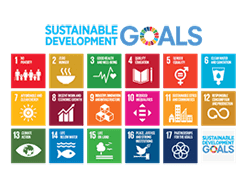The Vice President of India Shri M. Hamid Ansari has said that our education system, as a whole and at all levels, continues to suffer from the three problems of access, equity and quality. Despite the growth in recent decades, enrollment levels remain below the world average. Wide disparities exist in enrolment percentages across socio-religious groups, gender and geographies. Dropout rates continue to be high at the primary and secondary levels. The education sector is plagued by a shortage of well-trained faculty, poor infrastructure and outdated curricula. Resources as a percentage of GDP allocated to education remain at less than the required level. Addressing at the “11th Annual Convocation of the Jamia Hamdard” on the theme “Education, Empowerment and Employability” here today he has opined that given the direct correlation between education, employment and empowerment, the biggest challenge confronting us is low employability of our graduates passing out of the higher education institutions.
He said that India is blessed with the second largest working population in the world after China. It is estimated that by 2022, 63 per cent of our population will be in the working age group. This translates into a very large number in absolute terms. We are also one of the few countries where the working age population will be far in excess of those dependent on them, for at least three decades till 2040. This demographic structure presents us with an opportunity of a potential ‘demographic dividend’, which tapped, could add to our growth potential, provided two conditions are fulfilled. First, higher levels of education and skill development are achieved. Second, an environment is created in which the economy not only grows rapidly, but also enhances good quality employment/livelihood opportunities to meet the needs and aspirations of the youth and the marginalized and deprived sections of society.
The Vice President said that since higher education is within the domain of both the Centre and the States, the question of standardization of quality needs to be addressed on a continuous basis. Yet another complicating factor, of more recent origin, is the emergence of a large number of institutions of higher education in the private sector. Today they enroll almost 59 percent of the student body; they also largely remain beyond the quality control mechanism of the government. What is required is to widen the reach, enhance affordability and improve quality of education so that it is accessible to all strata of society. This would require dedication of more resources, creation of better physical and pedagogic infrastructure, modern and updated curricula and an effective regulatory framework.
He emphasized that the education system will have to gear itself to support nation’s economic agenda by creating job-ready and employable workforce through increased focus on imparting structural and technical skills. This would be critical for achieving faster, sustainable and inclusive growth on the one hand and for providing decent employment opportunities to the growing young population and the needy sections of society on the other.
The Vice President called upon the students to develop an urge for excellence and to persist in it. Obtaining a university degree is not the end of their quest for knowledge. As someone said, excellence is not a destination; it is a continuous journey that never ends. So strive continuously for your own betterment and that of your society.
Source: PIB


